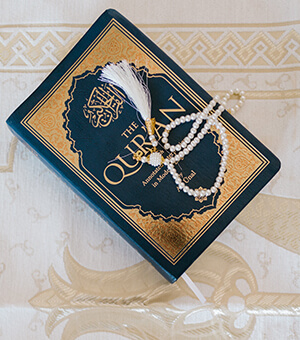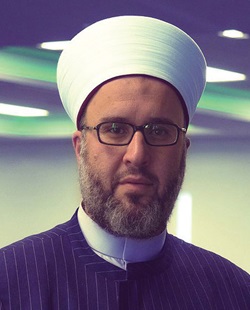


Welcome to the Islamic Center
Islam emerged in the early 7th century CE in Mecca, Arabia, through the divine revelations received by Prophet Muhammad (PBUH).
610 CE: Prophet Muhammad (PBUH) received his first revelation from Allah through the Angel Jibreel (Gabriel) in the Cave of Hira. This event marked the beginning of his prophethood.
Core Teachings: Islam emphasized monotheism (Tawhid), social justice, charity (Zakat), prayer (Salah), and ethical conduct.
Persecution in Mecca: Early Muslims faced severe persecution from the Quraysh tribe.
622 CE - The Hijrah: Prophet Muhammad (PBUH) and his followers migrated to Medina, an event known as the Hijrah, marking the beginning of the Islamic calendar.
Formation of the First Islamic State: In Medina, the Prophet established a cohesive Muslim community and laid down laws promoting social justice and equality.
Conquest of Mecca (630 CE): Prophet Muhammad (PBUH) and his followers peacefully entered Mecca, cleansed the Kaaba of idols, and established Islam as the dominant faith in Arabia.
632 CE - The Passing of the Prophet: After delivering his Farewell Sermon, Prophet Muhammad (PBUH) passed away, leaving behind a rapidly growing faith.
After Prophet Muhammad’s death, leadership transitioned to the Rashidun Caliphs, the "Rightly Guided" successors.
Abu Bakr (632-634 CE): Unified Arabia under Islam and successfully led the Ridda Wars against apostate tribes.
Umar ibn Al-Khattab (634-644 CE): Expanded Islamic rule into the Byzantine Empire, Persia, and Egypt, and introduced administrative and judicial reforms.
Uthman ibn Affan (644-656 CE): Compiled and standardized the Quran into a single book, distributing copies across the Islamic world.
Ali ibn Abi Talib (656-661 CE): Faced civil strife during the First Fitna (Islamic civil war) but played a key role in the development of Islamic jurisprudence.
The Umayyads, led by Mu’awiya I, shifted the caliphate’s center to Damascus and expanded the empire significantly.
Expansion: Islamic rule extended into Spain, North Africa, Central Asia, and the Indian subcontinent.
Administrative Reforms: Arabic was established as the official language, and a centralized bureaucracy was developed.
Cultural Integration: Influences from Persian, Greek, and Roman civilizations enriched Islamic culture.
Decline: The Abbasid revolt, fueled by opposition to Umayyad rule, led to their downfall in 750 CE.
The Abbasids overthrew the Umayyads and moved the capital to Baghdad, ushering in the Golden Age of Islam.
Scientific and Cultural Advancements: Scholars made breakthroughs in medicine, mathematics, astronomy, and philosophy.
Al-Khwarizmi: Developed algebra and introduced the Hindu-Arabic numeral system.
Ibn Sina (Avicenna): Authored "The Canon of Medicine," an influential medical encyclopedia.
Al-Farabi & Al-Ghazali: Contributed significantly to Islamic philosophy and theology.
House of Wisdom (Bayt al-Hikma): Established in Baghdad as a major center for knowledge and translation.
Economic Growth: Flourishing trade along the Silk Road boosted economic prosperity.
Decline: The Mongols sacked Baghdad in 1258 CE, effectively ending Abbasid rule.
Following the fall of the Abbasids, several powerful Islamic empires rose.
Founded by Osman I and expanded to include Turkey, the Middle East, North Africa, and parts of Europe.
Conquest of Constantinople (1453 CE): Sultan Mehmed II transformed it into the new capital, Istanbul.
Peak under Suleiman the Magnificent (1520-1566 CE): Expanded territory and enhanced legal and administrative systems.
Declined due to internal conflicts and European colonial expansion.
Established in Persia by Shah Ismail I, making Twelver Shi'a Islam the dominant sect.
Flourished in art, architecture, and Persian culture.
Declined due to internal strife and external threats from the Ottomans and Afghans.
Founded by Babur after the Battle of Panipat.
Akbar the Great (1556-1605 CE) promoted religious tolerance and administrative reforms.
Built architectural marvels like the Taj Mahal (by Shah Jahan).
Declined due to British colonialism and internal divisions.
The modern era has seen significant changes in the Islamic world.
1924 CE - Fall of the Ottoman Empire: The abolition of the caliphate led to the fragmentation of Islamic governance.
Independence Movements: Many Muslim-majority nations gained independence from European colonial rule.
Revival of Islamic Identity: Pan-Islamic movements and institutions like the Organization of Islamic Cooperation (OIC) emerged.
Growth of Islam: Today, Islam is the second-largest and fastest-growing religion, with over 1.9 billion followers worldwide.
Technology and Education: Muslim nations are increasingly integrating modern technology while preserving Islamic traditions.
Islam has played a pivotal role in shaping global history, from its early foundations in Arabia to its influence across continents. Its teachings continue to guide millions, fostering a rich legacy of knowledge, culture, and spirituality.





Ramna Thana Jame Masjid



